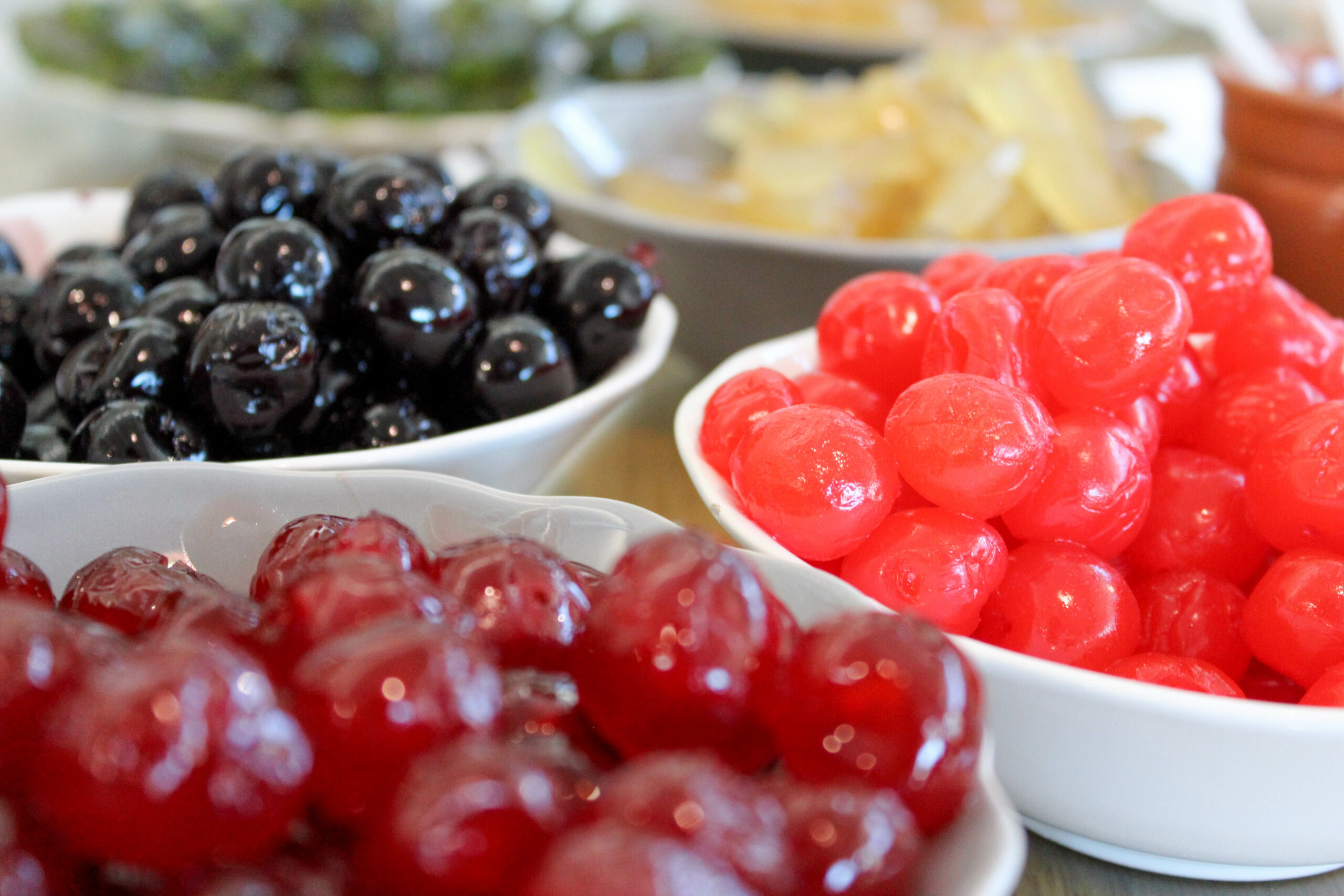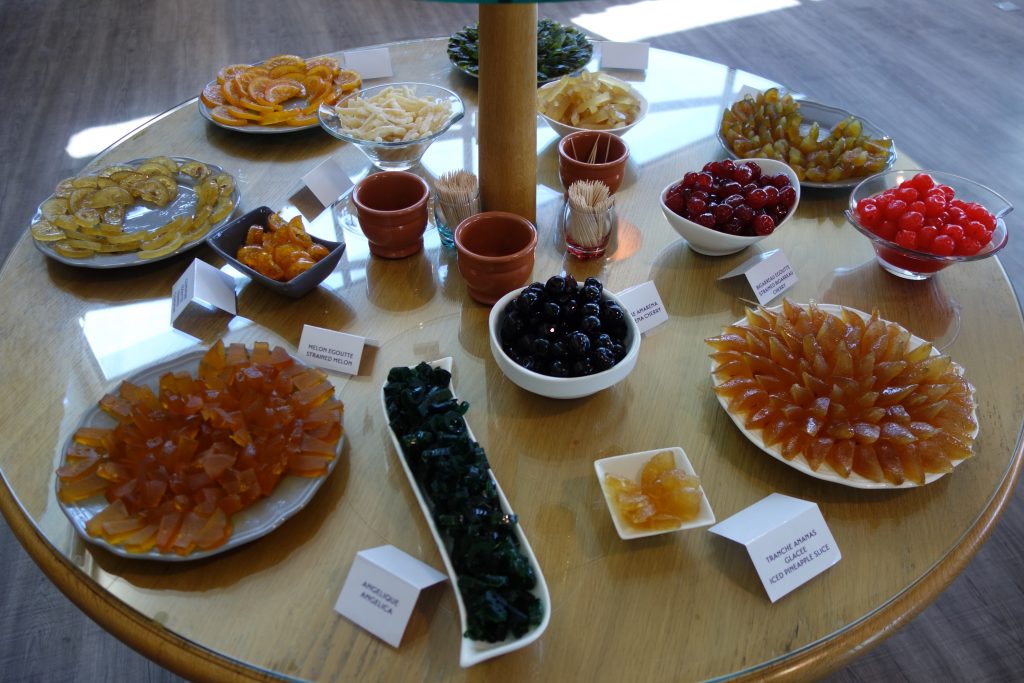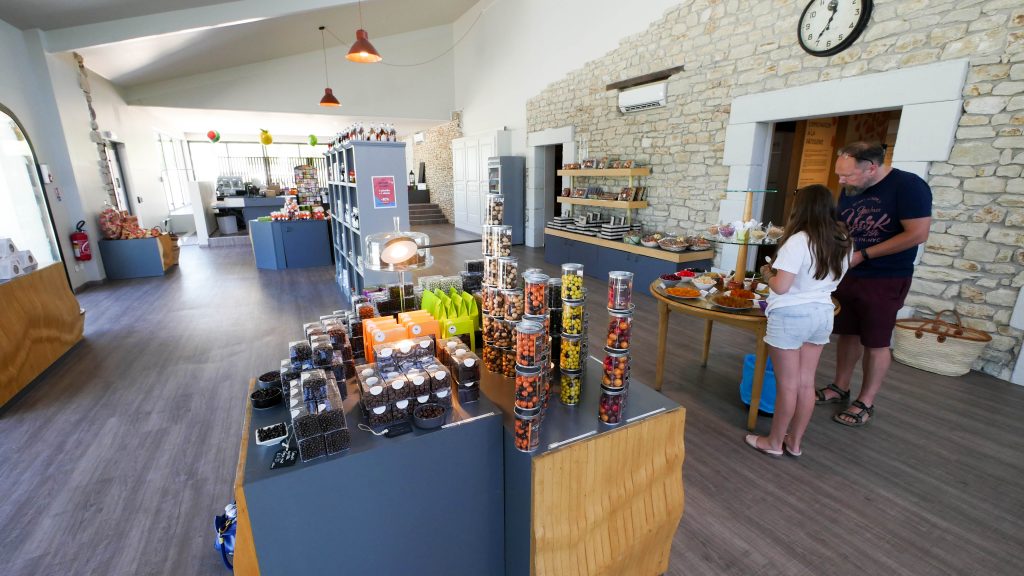It’s just been added to France’s list of Intangible Cultural Heritage and has earned its native town recognition as a “Site Remarquable du Goût” (Remarkable Site of Flavour); it’s beautiful, shiny and distinctive, and yet it’s largely unknown as a Provençal speciality: it’s the candied fruit of Apt! Vaucluse has long been the kitchen garden of France, and this technique preserves the fruit so it can be eaten in winter – especially at Christmas, when glacé fruit forms one of the traditional “13 Desserts”. In Apt, the Maison du Fruit Confit (House of Candied Fruit) has just opened, so visitors can discover this traditional skill, taste it and learn how to cook it.
The art of candied fruit
Making glacé fruit is part of the culinary heritage of the Luberon, where orchards of cherry and apricot trees alternate with vineyards and olive trees. Back in Medieval times, the search for brightly-coloured, refined delicacies for their banqueting tables led Avignon’s Popes to buy confiture sèche (“dry jam”), as candied fruit was then called, from the confectioners in Apt. A few centuries later, in 1962, several of the town’s family businesses decided to join forces as a cooperative and Aptunion was born – now ranked world leader in candied fruit. This historic and very local production – employing up to half the town’s working population – earned Apt the gastronomic tourism title of Site Remarquable du Goût (Remarkable Site of Flavour) in the 1990s. It has now earned the town a place in France’s Intangible Cultural Heritage list, and perhaps soon the title of UNESCO World Heritage site.
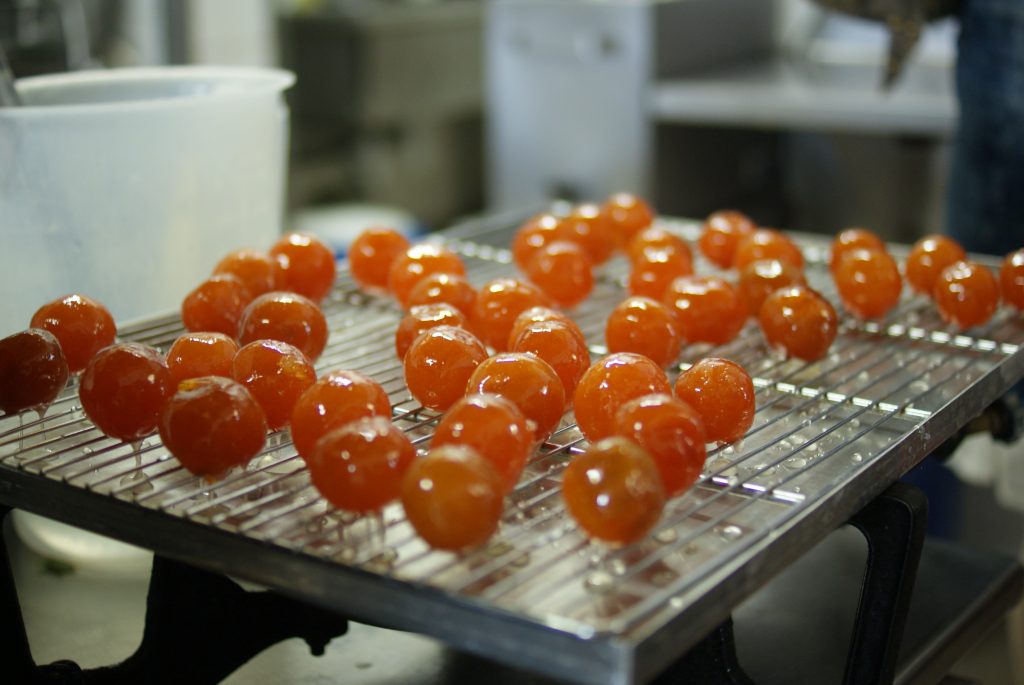
La Maison du Fruit Confit – The House of Candied Fruit
There was nowhere that showcased this emblematic product, explaining its history and the process of fruit-preserving. Now La Maison du Fruit Confit has just opened on the Kerry Aptunion production site at the entrance to Apt. First an exhibition space displays vintage machinery, historical documents, a smell identification game, and various videos showing the candying process, how the fruit is used in cooking, and more. Informative panels in French and English help visitors understand the history of the skill and fruit-preserving techniques that have been passed down from Antiquity to the present day.
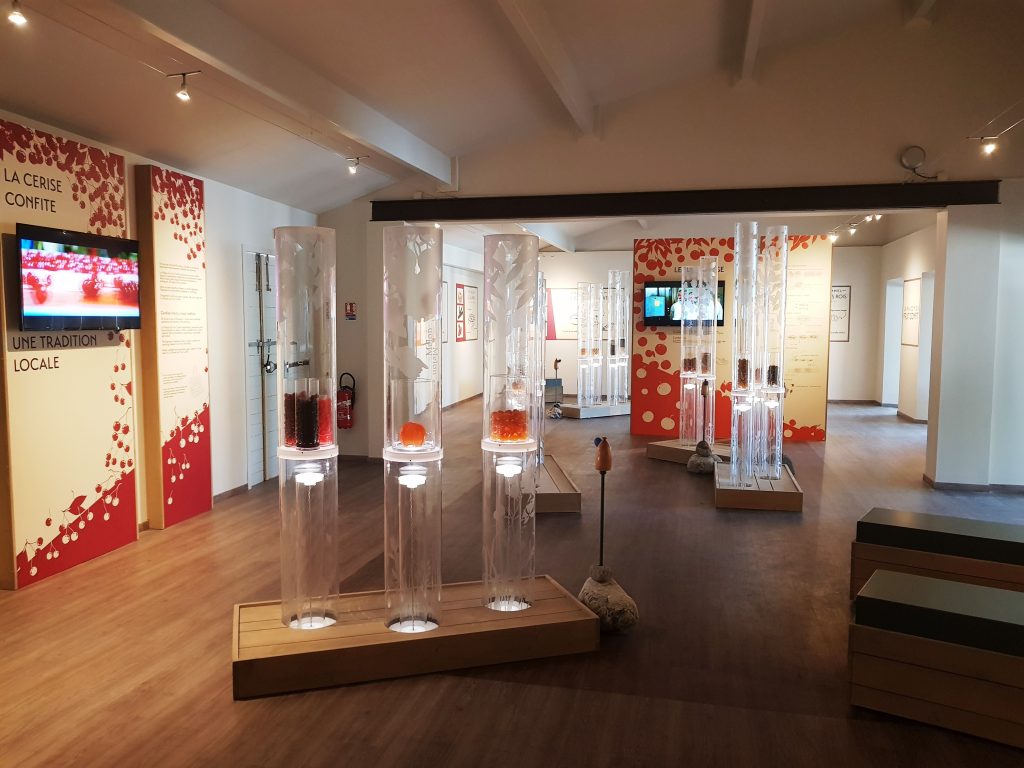
The visit concludes in the tearoom, where visitors have a chance to taste the candied fruit in the form of delicious pâtisseries baked in the place where the fruit was confected.
The last stop is a boutique where plain candied fruit and glacé fruit-based Provençal specialities are on sale, all locally produced. You can also buy various other Provence delicacies like Berlingots de Carpentras, Calissons d’Aix, Ventoux nougat, and more.
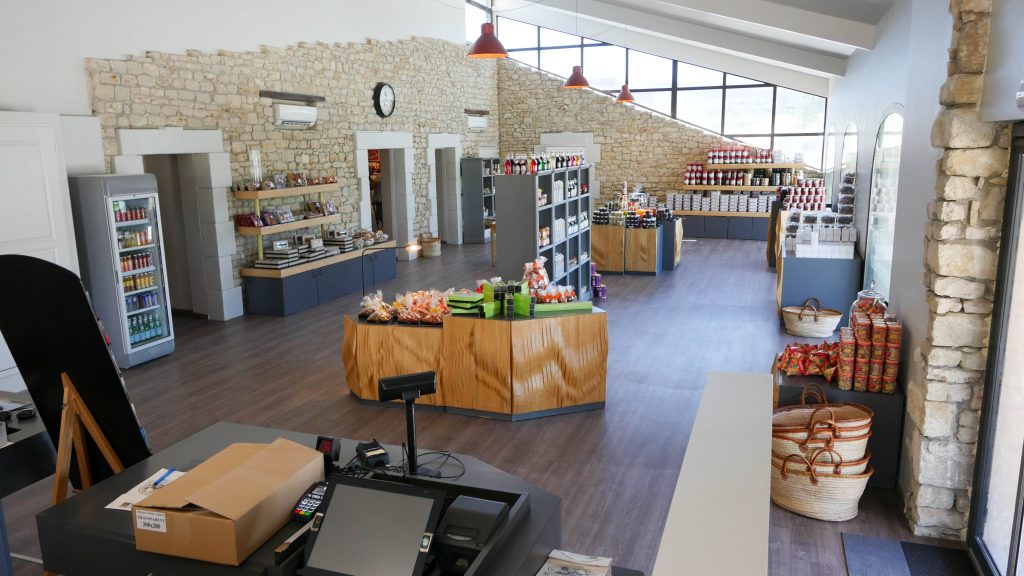
Practical Information
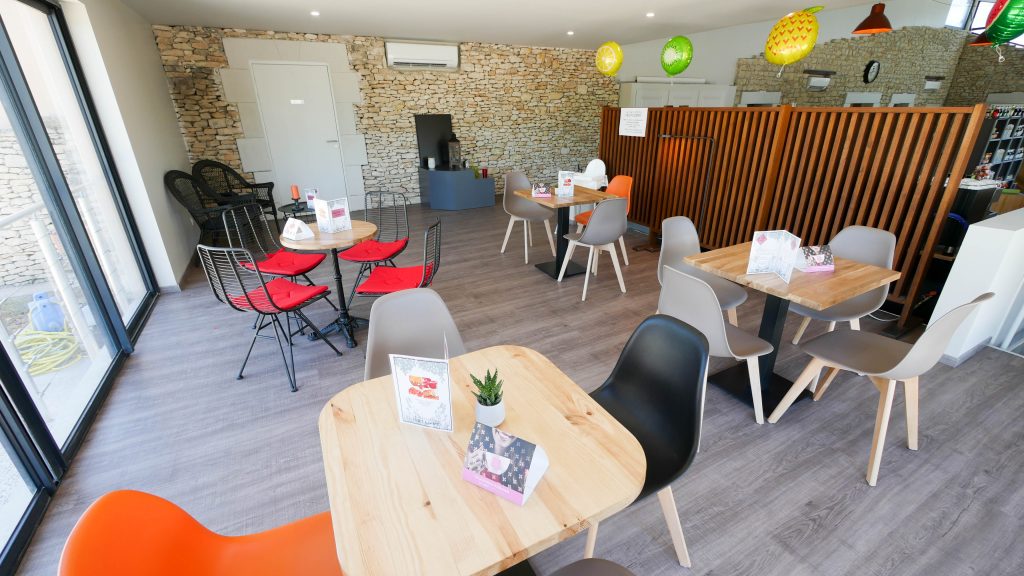

Open Monday to Saturday from 9.30 am – 6.30 pm, depending on the season
Free entry for self-led tours
Workshops on a range of topics (“Cherries and their uses”, “Flavours and Aromas”, cookery workshops, etc.), are regularly scheduled. Cost of €4, by reservation.
Carpark for cars and buses.
Learn more about candied fruit :
You can also visit the Musée de l’Aventure Industrielle (Museum of Industrial History) in Apt, with one floor dedicated to candied fruit and the two other spaces being devoted to the ochre industry and ceramics.
Contact
Maison du Fruit Confit
Quartier Salignan – RD 900
84400 Apt
T. +33 (0)4 90 76 31 43
www.lesfleurons-apt.com
Contact : Benoit Rougier
T. +33 (0)6 38 45 83 24
benoit.rougier@aptunion.com
GPS Coordinates
5.361556
43.885500
